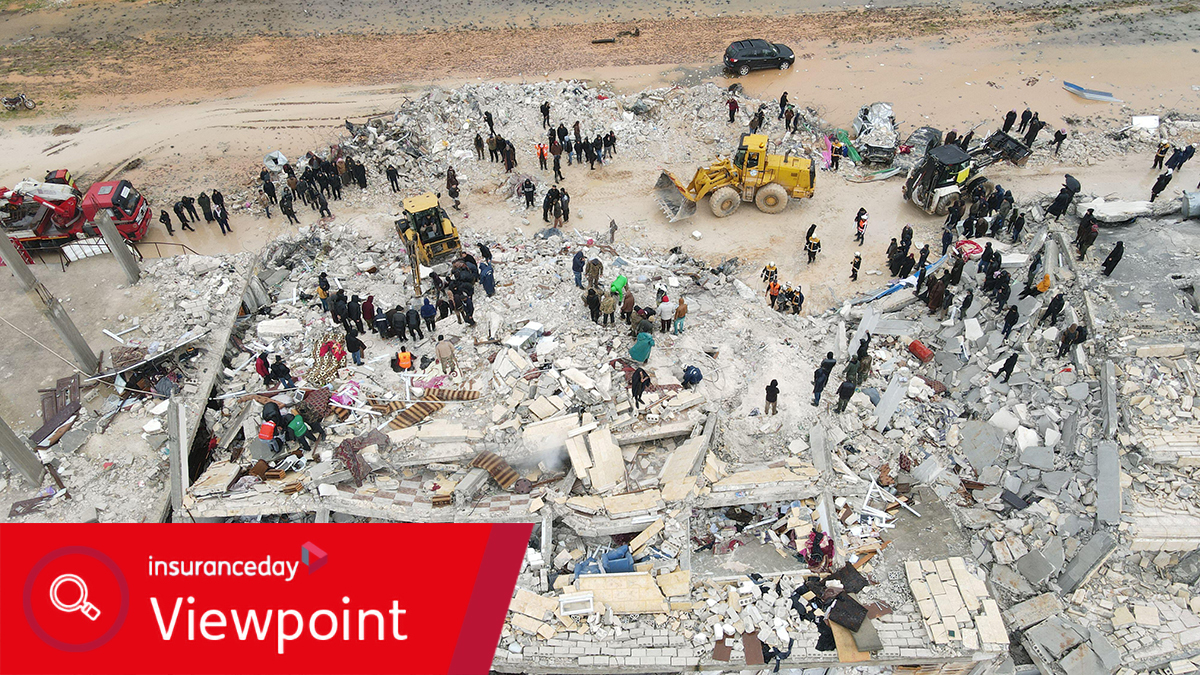Compared with countries with the highest risk of experiencing disaster or vulnerability to extreme natural events – the Philippines, Indonesia and India, according to the 2023 World Risk Report – the Middle East is considered to have a relatively low natural catastrophe exposure.
However, while the region is less exposed to tropical cyclones than others, it does have its share of natural perils.
The earthquake in southern Turkey and its neighbour Syria on February 7, 2023 had a magnitude of 7.8 followed around nine hours later by another earthquake 59 miles away with a magnitude of 7.5. There was widespread damage in an area the size of Germany. An estimated 14 million people, 16% of the population, were affected by the seismic event, with between 50,000 and 59,000 deaths in Turkey and more than 8,400 in Syria.
The Turkish earthquake, estimated at $5.8bn, was the largest non-US natural catastrophe event last year and it had an impact on local, regional and international players in both facultative and treaty reinsurance. Most of the business renewing in Turkey after the earthquake experienced more stringent terms and conditions.
The impact on capacity
In the aftermath of this devastating earthquake, there is now less capacity, it is much more expensive and retentions are increasing.
The Turkish Catastrophe Insurance Pool faced a tripling of rate on line in its $2bn reinsurance programme. A fair number of international players, as well as local players, were affected by this large catastrophe event, which also had an impact on the pricing of other heavily exposed accounts in the region.
Capacity has left heavy catastrophe areas such as Turkey, a country that is very seismic, and has moved into less exposed areas such as the United Arab Emirates, Qatar and Saudi Arabia.
And while we are experiencing a hardening insurance market in heavy catastrophe areas, we have been seeing some pressure downwards in less catastrophe-exposed ones, in terms of pricing, where there is more capacity.
Secondary perils
The general perception of relatively low catastrophe exposures in the region may have brought in new capacity, but the risk of climate change-related secondary perils, specifically flash floods and convective storms, has increased over the past 10 years.
Last November, for example, there was flooding in Dubai after heavy rainfall and thunderstorm, with police warning people to stay clear of beaches and exercise caution while driving through waterlogged roads.
The problem for insurers is these secondary perils in the Middle East have not been properly assessed due to a lack of historical data – a gap our industry needs to address.
Not only are these events increasing in frequency, but also in severity because of the huge expansion in the construction of infrastructure and new buildings in the region as well as an increasing population. Property motor insurance is the main business line affected by those events.
The clients’ perspective
Clients are more aware of changes in nat cat exposure and of the emergence of new perils, and catastrophe exposure is becoming a significant differentiator in terms of pricing and conditions.
Insurance awareness and penetration is increasing as clients are more aware of their own risks and of the advantages of transferring those risks to the insurance industry. There is an increase in treaty covers for catastrophe events as well as limits purchased by insured clients. Named peril policies are becoming much less common than all-risk policies.
Customers are also turning to new approaches, such as parametric insurance and reinsurance, while some countries have implemented pools of insurance to protect the more vulnerable businesses and individuals. We expect this trend to continue.
What insurers can do
The management of accumulations and the monitoring of secondary perils exposure are becoming crucial and require investments that will bear fruit in future years.
At IGI, we have invested in a strong aggregation team that is fully dedicated to monitoring our accumulations and building our own models. The work performed by this team is fully integrated with our underwriting process.
The accurate assessment, monitoring and pricing of catastrophe exposures and accumulations is key to controlling volatility, which is becoming crucial to the success of any insurer or reinsurer managing weather-related risk in this region.
Globally, secondary perils have been overlooked in recent years. In 2022, severe hail in France cost the re/insurance industry around $5bn and led to calls for pricing adjustments. In 2023, unusually heavy rains caused flooding in Italy and France in areas that had never experienced such intense events, with losses of more than $3.3bn in Italy, the costliest nat cat-related insured loss ever in that country.
Similar perils, including flash floods, are now also affecting the Middle East, where they are becoming more frequent and severe. Climate change is a real challenge for insurers and reinsurers both globally and in the Middle East. Historic models are no longer accurate, and insurers and reinsurers need to reassess their real exposure in the light of these changes.
Henri Labat is senior executive officer at IGI Dubai
